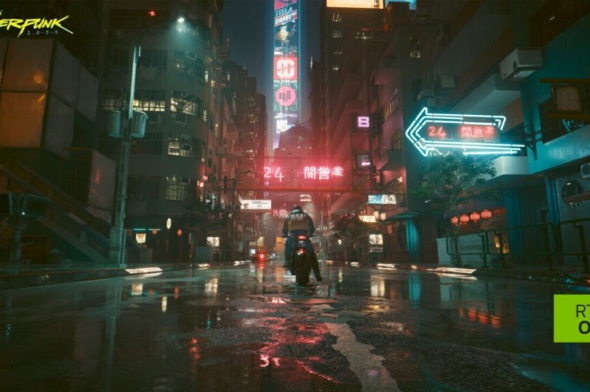Connection to DriversCloud Create a DriversCloud.com account Reset your DriversCloud.com password Account migration
Ray Tracing Overdrive: NVIDIA wants to go beyond "simple" ray tracing
Cyberpunk 2077 is the flagship of this new technology that will bring our graphics cards to their knees even more.
If ray tracing as a graphic rendering technique is not really new, its application to the video game world is much more recent. It is now very popular, but before going into the details of what NVIDIA is now offering, it is important to clarify things. The principle behind ray tracing is not very complicated. It's a technique that relies on the path of light, but in "reverse". Rather than working from the source point, we simulate and calculate the lighting from the camera to the objects and then to the lights. In reality, things work the other way around: the light goes from the scene to the eye.
For the video game enthusiast, but also for the developer, ray tracing has a huge advantage over previous rendering techniques. By analyzing the path of the light, it is possible to determine its alteration according to the objects and surfaces it passes through. The effects of reflections and refractions are thus taken into account "automatically" and without error. It is therefore no longer necessary for the game development studio to think of all the possibilities, to calculate all the light sources and their impact on the scene. On the other hand, ray tracing has an important flaw directly related to the realism of its rendering: it imposes a lot of calculations and requires important system resources.
In fact, the games with the most ray tracing effects are also the heaviest, but this is obviously not enough for NVIDIA. The company is actually trying to capitalize on its lead in ray tracing. Indeed, in ray tracing, competitors AMD and Intel are doing well with their Radeon RX and ARC series. However, they are unable to fight when ray tracing effects are activated in games like Metro Exodus or, even more so, Cyberpunk 2077. It's not surprising that NVIDIA is once again using Cyberpunk 2077 to promote path tracing, a new technique based on the idea that "basic" ray tracing is still incomplete. In path tracing, ray tracing is used even more extensively for richer, more realistic scenes.
On Cyberpunk 2077, path tracing is done in a mode called ray tracing: overdrive. NVIDIA and the studio CD Projekt RED have obviously worked hand in hand to achieve this new graphics mode which is deployed with the 1.62 update of the famous game. From the outset, there's no need to make a fuss if you don't have a high-end card. On small configurations, the two partners are magnanimous and they have developed an option close to path tracing in the game's photo mode: you still need an RTX graphics card with at least 8 GB of video memory. To activate ray tracing: overdrive in the game itself, you need a GeForce RTX 3090 for Full HD @ 30 frames per second or an RTX 4070 Ti, RTX 4080, RTX 4090 to aim higher.
The option being very heavy, even on such graphics cards, it may be interesting to activate the new workhorse of NVIDIA, the DLSS3. This technology allows you to take advantage of countless additional graphic effects while relieving the graphics card of some of the calculations. With images and graphics to back it up, NVIDIA insists on the quality of the graphic rendering thus obtained, while emphasizing the preserved fluidity of the animation. It's a dream, but for many of us, it will remain a dream for a long time to come.











